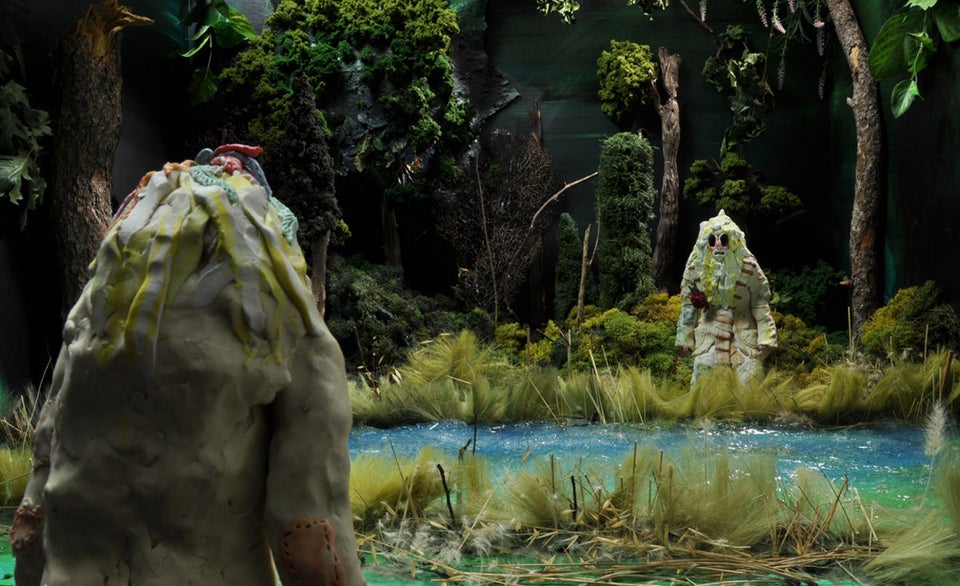"Did you ever wonder if the person in the puddle is real, and you're just a reflection of him?"
This Calvin and Hobbes quote, at once adorable and alarming, kicks off the press release for Para-Real, a group exhibition exploring the alternate realities that contribute to our ability to discern a decisive reality at all.
Curated by Magdalena Sawon of Postmasters Gallery for a non-profit 601Artspace, the exhibition features seven pairs of artists who in some way disrupt what is accepted and perceived as being real. Thomas Demand, Jennifer & Kevin McCoy, Jim Hodges, Robert Therrien, Eva & Franco Mattes, Shamus Clisset, Vik Muniz, Greg Allen, Maurizio Cattelan, Sally Smart, Hiroshi Sugimoto, Adam Cvijanovic, Trevor Paglen, Melissa Dubbin and Aaron S. Davidson produce a conceptual funhouse via puppets, models, fakes, virtual realities and paranormal activities.
In anticipation of the show we reached out to multimedia artist duo Jennifer and Kevin McCoy. The Brooklyn-based, husband-and-wife team create technologically assisted sculptures that turn memories, myths and cultural landscapes into three-dimensional image collages on loop. Many of the sculptures are rigged with serpentine cameras, catching and playing back every twitch of the sculpture in real-time. Using repetition, reenactment and miniaturization, the McCoys create self-contained worlds where images of different media and veracity can interact.
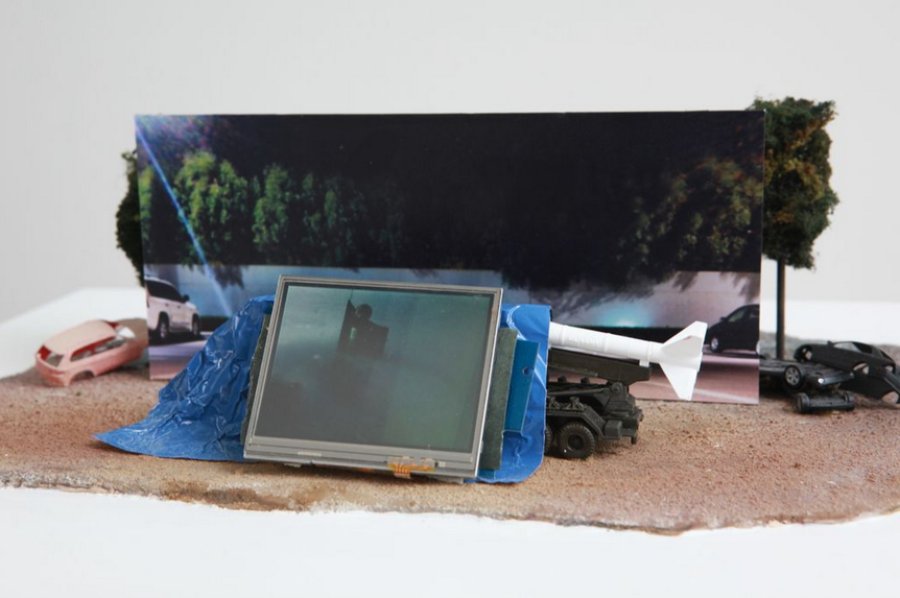
Tell me about your pieces in Para-Real.
Jennifer McCoy: We have two pieces, both of them are from our last show in New York, which took place right around the superstorm, so we are really excited to see them again and in this context. We're paired with Thomas Demand who has always been an interesting foil to us in terms of what is fake and what is real. Both works contain video elements embedded in images that serve as abstractions of what the land is doing right now.
Kevin McCoy: You really have to see them!
JM: They both have these interesting collages about landscapes and ideas about what is natural versus what is simulated. For example, there's one part where you can see a green area, but where we originally took the picture in Abu Dhabi, the green area was only green because the Sheikh who owned the property had artificially watered it. It's an image of a real, simulated place.
How do you see your work interacting with Demand's?
JM: I think Demand works really hard to create these illusions, using very simple materials to create very elaborate, photographic images. We're in a sense working backwards from that, where we have pictures of real things but we're then creating the simulation extending from it. I feel like in some ways they are related, but in an inverted way.
KM: Formally, our work is very different from Demand's. He's making photographs, so the objects he makes, photos on the wall -- their status as a objects is pretty understood, pretty seamless. Whereas our works are much more ambiguous constructions with embedded photos, models and video components. So formally they're just a lot stranger.
How would you describe the formal aspects of your work?
JM: We really try to get a lot of mileage out of the fact that we can blend together two-dimensional and three-dimensional objects and video inside the same space. We are creating this landscape that may have echoes in reality but is not at all meant to look like a realistic place. Especially with these screens, we've done this whole series with small screens in the sculptures. It's inspired by the power-sized screens you see in the public spaces in New York and other big cities, where the scale has gone from being really intimate in your home or in your hand to being really maximal inside of a city. When we're building these screens into the landscape they're meant to be these maximal, outside screens... even though they're four inches across.
KM: We're re-miniaturizing them.
Some of your works seem almost like technological tools and yet they have a toy-like vibe as well. Do you differentiate between tool, art object and consumer object? How would you describe what your making?
KM: There are times when we're thinking in a more tool oriented way. There are times in our work where we've developed software systems or other kinds of systems and thought of them as a kind of tool-making-thing. But normally that's a kind of interim step and you have to step out of that mindset and think of it as an object. At the end it has to find its own form and that's when it becomes an artwork.
How does technology operate in the Para-Real sculptures?
JM: I think in these two pieces the technology is kind of a found object that we've incorporated. The fact that screens are so much a part of the landscape means we can grab that as a form. But we need the object there. It's a frame and it's a different kind of movement in this otherwise static piece.

What is particularly exciting to you about this exhibition?
JM: As great as it is to unwind your ideas in a solo exhibition, as an artist I really love the group show. Just seeing how ideas that you thought you were working on on your own get bounced around with a bunch of related works. I was just reading this Mike Kelley essay that he wrote about this exhibition that he curated on the uncanny, and all of the artists that he included in it probably wouldn't have thought of their work as uncanny until Mike Kelley put them all in a room together. Looking at that tension between curatorial and artistic goals and I think it's so exciting to see your work in a context someone else dreamed up.
Your works recount anything from your travels together to your first date. What is the process of creating these joint autobiographies?
KM: This particular series of work came out of our experiences living in the Middle East and traveling to other parts of the world. Basically getting an experience of how globalization has taken place, how it's affecting landscapes and cities and images. We're having these experiences together in that the sense that we're looking at them together, talking about them together. So we have this shared experience that we're drawing upon when we take it into the studio. In the studio we can show each other an image or sketch or idea that's shorthand, and then amplify it together in a unified piece.
JM: Other works don't function that way. We had this whole series called "Double Fantasy," which was about conversations about different topics and I would have my side of the sculpture and Kevin would have his. And so it was this whole idea of how can we model a conversation or frame out a memory of something that happened before we were together?
But in cases like this where we were traveling and we're responding to the world, we develop a shared take on things that is part of this development of how the work comes together. But, I have to say, the fact that we use hybrid things is really, really helpful. A lot of the photography comes from the iPhone stuff Kevin was doing and they were literally printed out and pasted into a sketchbook. We then drew the sculptures around them and executed them into three dimensions and the video was the final element. He was the documenter and, where other people might throw those photos away, we saw these photographs as possibly something else too.
How would you describe your stance toward the screen overloads that play such a huge role in your work? Is there negativity there?
JM: I guess it's insistent. I just think that stuff is not going away. It is here, and unless there is a major apocalypse it's here to stay.

This is Postmasters' first exhibition since it relocated from Chelsea to Tribeca. How do you feel about the move and about the direction of Chelsea in general?
JM: I am happy to have a different place to check out. Much like when we went to Abu Dhabi I think it will be nice to de-center the practice and the city.
KM: We've always lived in Brooklyn and have our lives located in other places besides Chelsea. Chelsea's fun, but we don't really worry about it that much.
JM: I think it was good for Magda also to really discover what a gallery is and what good things can come of it. How can the gallery be used in an age when so much happens online or at art fairs? What is the real benefit to having that physical experience? And even though we work with digital media I really still love the idea that this stuff gets talked about and embodied and mapped out in real space.
Where do you see the New York art world in ten years? Do you think the art scene is accelerating or declining?
JM: I don't think decline or acceleration is the right way to frame it. I think it is functioning differently. I think that physical studios will look a lot different and the way artists are using New York is shifting.
KM:There is no danger of New York going away. New York is getting inundated with rich people from around the world -- just look at the Christie's auction. there are insane amounts of money and yet the participants involved are from everywhere. It is not the center; it is more like a node, a lynchpin node.
JM: I feel like there are different art worlds. The Bushwick people have a completely saturated art experience but that's not related at all to what's happening in the auction houses. What's happening in Bushwick could be more related to Berlin than Chelsea. Geographic boundaries are sometimes important, but it's not the only thing.
What does your next project look like?
JM: We're doing a residency at the Headlands Center for the Arts. We went on a crazy road trip this summer looking at a lot of major American monuments like Mt. Rushmore, and we had done this piece for our last show where we did a miniature monument to Gordon Moore, the founder of Intel. So we want to do some research in Silicon Valley and think about the Libertarian thread in a lot of technology culture and companies.
See Jennifer and Kevin McCoy's work in Para-Real, running through January 25, 2014 at 601Artspace. Take a look at other works in the exhibition below.
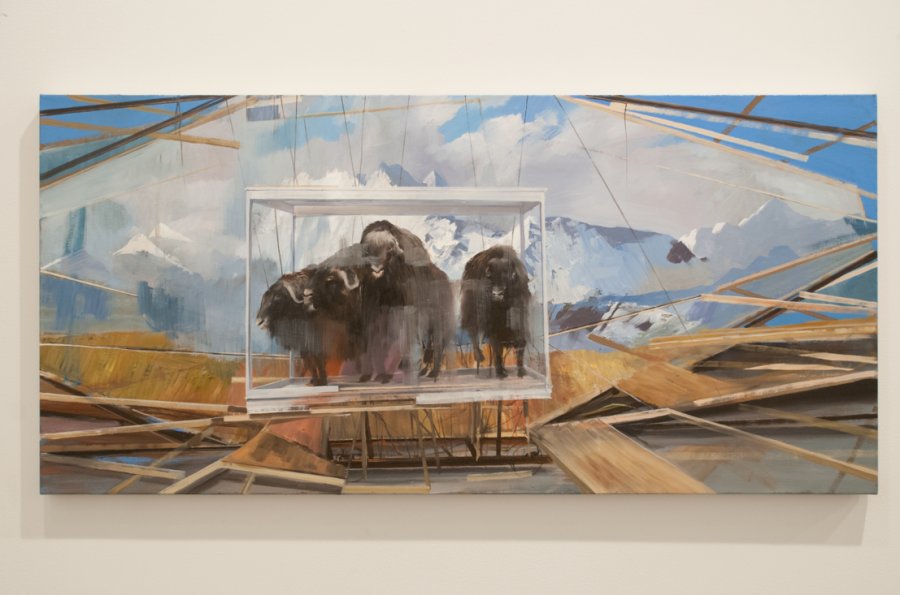
Adam Cvijanovic

Eva & Franco Mattes
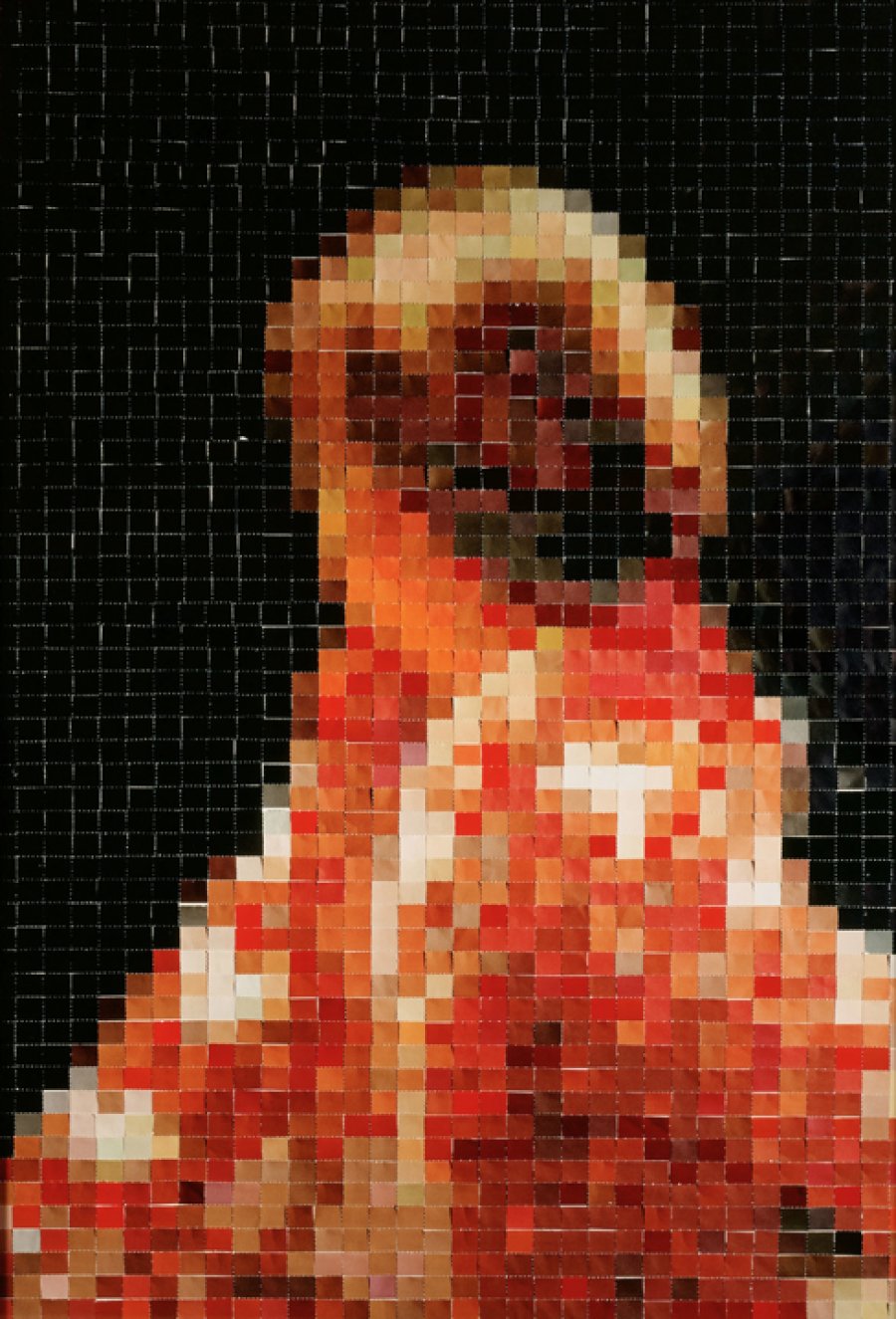
Vik Muniz

Hiroshi Sugimoto
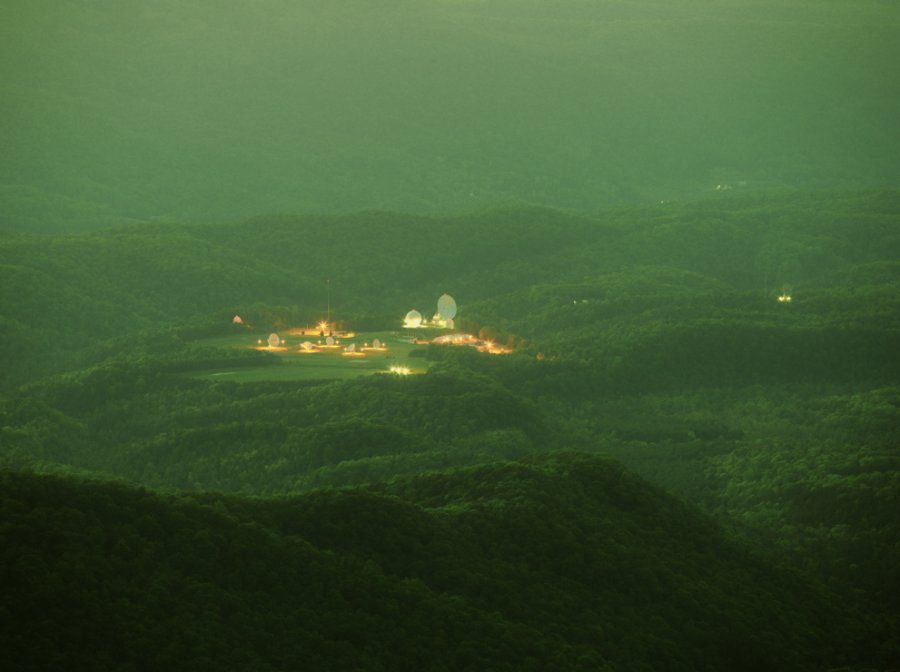
Trevor Paglen
